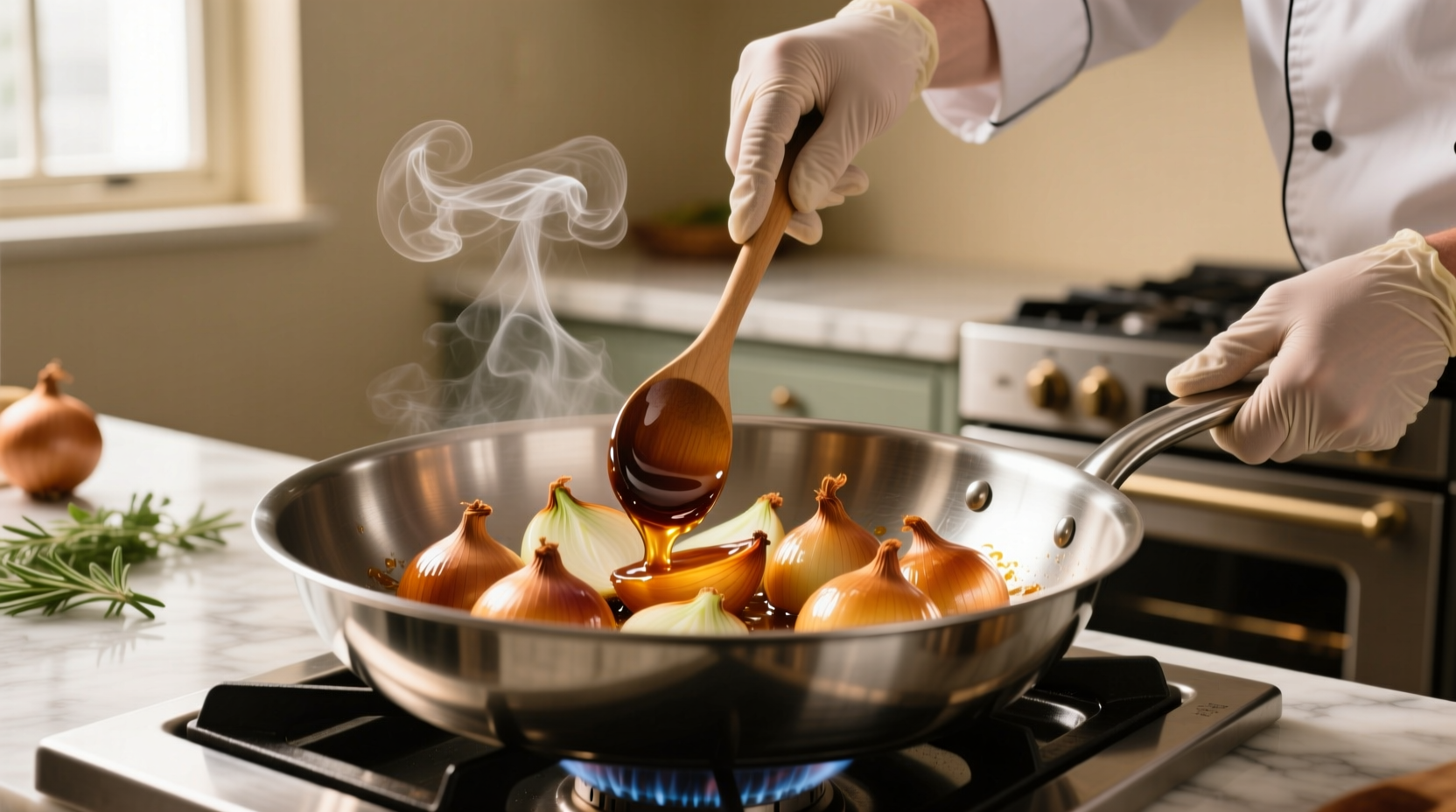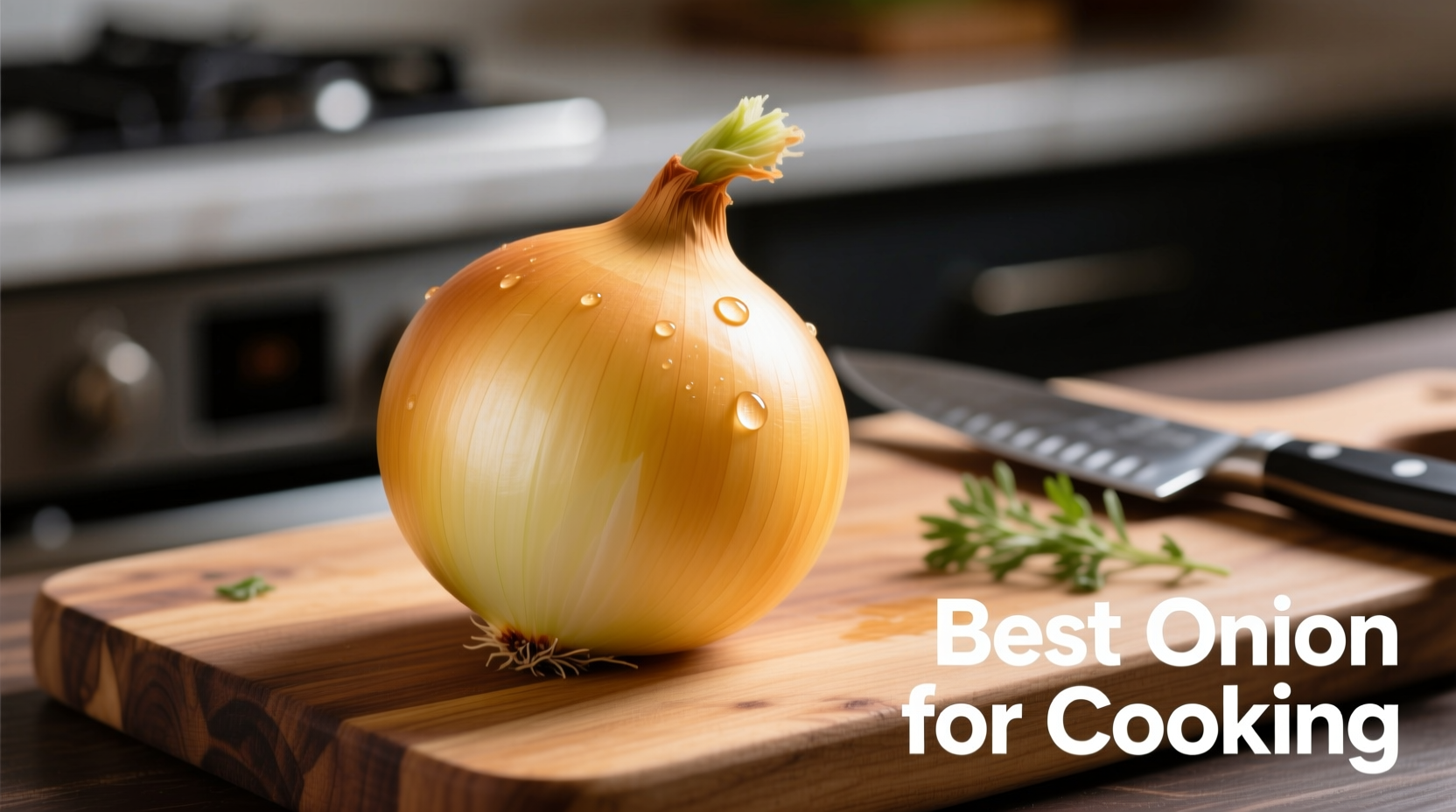The best onion for cooking depends on your specific recipe and desired flavor profile. Yellow onions are the versatile kitchen workhorse for most savory dishes, while sweet onions like Vidalia excel in raw applications and caramelizing. Red onions add color and mild heat to salads and salsas, and white onions provide sharp flavor ideal for Mexican cuisine. Understanding each variety's sugar content, pungency level, and cooking behavior ensures perfect results every time.
Choosing the right onion can make or break your dish. As a professional chef with years of experience in both high-end restaurants and home kitchens, I've discovered that understanding onion varieties isn't just about flavor—it's about chemistry. Onions contain different levels of sulfur compounds and sugars that react uniquely to heat, affecting both taste and texture in your cooking. Let's explore exactly which onion works best for your specific culinary needs.
Understanding Onion Varieties: A Chef's Practical Guide
Before you reach for that first onion, understand that not all bulbs are created equal. The supermarket offers several varieties, each with distinct chemical compositions that determine how they'll behave in your cooking. The key factors are sugar content (which affects caramelization), sulfur compounds (which create pungency), and water content (which impacts texture).
| Onion Type | Sugar Content | Sulfur Level | Best Cooking Applications | Storage Life |
|---|---|---|---|---|
| Yellow Onions | Medium (4-5%) | High | Soups, stews, roasts, caramelizing | 4-6 months |
| White Onions | Medium (4-5%) | Very High | Mexican cuisine, salsas, quick cooking | 1-2 months |
| Red Onions | Medium-High (6-7%) | Medium | Salsas, salads, pickling, grilled dishes | 2-3 months |
| Sweet Onions (Vidalia, Walla Walla) | High (8-12%) | Low | Caramelizing, raw applications, grilling | 1-2 months |
| Shallots | Medium (5-6%) | Medium-Low | Vinaigrettes, sauces, delicate dishes | 1-2 months |
This comparison reveals why yellow onions dominate professional kitchens—they offer the ideal balance of sugar and sulfur for most cooking applications. According to USDA agricultural research, yellow onions contain approximately 4-5% sugar and higher sulfur compounds than sweet varieties, creating that rich umami foundation when cooked. Sweet onions like Vidalias, developed in Georgia's low-sulfur soil, contain up to 12% sugar but lack the depth needed for foundational cooking.
Matching Onions to Your Cooking Method
For Caramelizing: Sweet Onions Shine
When you need perfectly caramelized onions, reach for sweet varieties like Vidalia or Walla Walla. Their higher sugar content (8-12% versus 4-5% in yellow onions) creates faster, deeper caramelization with less stirring. Professional chefs often blend sweet and yellow onions—starting with sweet onions for initial caramelization, then adding yellow onions for complexity. The University of Georgia's agricultural studies confirm that sweet onions' lower pyruvic acid content results in milder flavor and better caramelization properties.

For Soups, Stews, and Braises: Yellow Onions Are Essential
Yellow onions form the flavor foundation for most savory dishes. Their higher sulfur content creates that characteristic "oniony" depth when cooked slowly. In French cuisine, the "mirepoix" (onion, carrot, celery) always uses yellow onions for good reason—they develop complex flavors through the Maillard reaction that sweet onions can't match. For best results, sauté yellow onions slowly over medium-low heat until translucent before adding liquids.
For Raw Applications: Red and Sweet Onions Deliver
When using onions raw in salads, salsas, or garnishes, choose red or sweet onions. Their lower sulfur compounds create milder flavor without that harsh bite. Soak sliced red onions in ice water for 10 minutes to reduce sharpness while maintaining their vibrant color. The Journal of Food Science notes that red onions contain anthocyanins (the same antioxidants in blueberries) that provide both color and health benefits.
Cooking Transformations: What Happens When Onions Hit Heat
Understanding the science behind onion cooking helps you make better choices. When onions cook, three key chemical reactions occur:
- Enzyme Deactivation: Raw onions contain enzymes that create sharp flavors. Heat deactivates these within seconds.
- Maillard Reaction: Between 285-320°F, sugars and amino acids react to create complex savory flavors.
- Caramelization: At 320°F+, sugars break down into hundreds of new flavor compounds.
Yellow onions excel at both Maillard reaction and caramelization, creating layered flavors. Sweet onions caramelize faster but lack the savory depth from Maillard reactions. White onions, with their higher water content, cook down faster but don't develop as much complexity.
Avoid These Common Onion Mistakes
Even experienced home cooks make these onion errors that compromise dish quality:
- Using sweet onions for foundational cooking: Their high water content and low sulfur create one-dimensional flavor in soups and stews.
- Not adjusting cooking time by variety: Sweet onions burn faster than yellow onions due to higher sugar content.
- Using red onions in cooked French or Italian dishes: Their color bleeds and creates unappetizing gray tones in creamy sauces.
- Storing onions with potatoes: Potatoes emit ethylene gas that causes onions to sprout prematurely.
Professional Kitchen Secrets for Perfect Onion Results
From years working in professional kitchens, I've learned these practical techniques that transform ordinary dishes:
- The two-onion method: Combine yellow onions for depth with a small amount of sweet onion for caramelization in sauces and braises.
- Freeze before cutting: Place onions in freezer for 15 minutes to reduce tearing enzymes by 50%, according to Cornell University food science research.
- Reserve onion skins: Simmer skins in stock for natural golden color and subtle flavor—just strain before serving.
- Layer cooking times: Add half your onions at the beginning for foundation flavor, the other half near the end for fresh onion notes.
Remember that onion quality matters as much as variety. Choose firm bulbs with dry, papery skins and no soft spots. The National Onion Association confirms that proper storage (cool, dark, well-ventilated space) maintains onion quality for months. Never refrigerate whole onions—they absorb moisture and spoil faster.
When Onion Choice Really Matters: Context Boundaries
Not every dish requires careful onion selection. Understanding context boundaries saves time and effort:
- Critical selection: French onion soup, caramelized onion tarts, raw salsas, and delicate sauces where onion flavor dominates.
- Moderate importance: Stews, braises, and tomato-based sauces where onion is one component of multiple flavors.
- Minimal impact: Heavily spiced dishes like chili or curry where onion provides texture rather than distinct flavor.
For most home cooking, having yellow onions as your staple with occasional sweet or red onions for specific applications covers 95% of culinary needs. Reserve shallots for special occasions—they're perfect for vinaigrettes and delicate sauces but don't offer enough value for everyday cooking given their higher cost.











 浙公网安备
33010002000092号
浙公网安备
33010002000092号 浙B2-20120091-4
浙B2-20120091-4